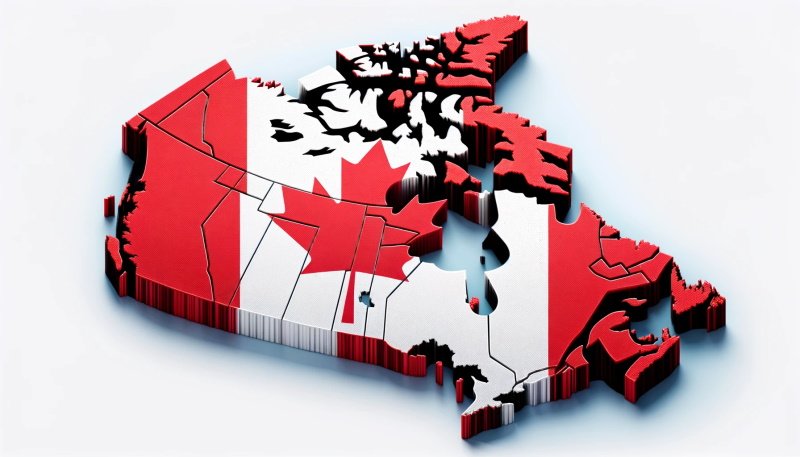How to Save for University in Canada with RESPs
If you want to know how to save for university in Canada with RESPs, you’ve come to the right place.
Many years ago, after moving to Canada from Serbia, we discovered a great way to save money for university or college for our kids. It’s called the Registered Education Savings Plan (RESP).
In this guide, I want to show you why RESPs are a good choice, how to see if they’re right for your family, and talk about all the benefits they can bring.
Let’s dive in and make saving for education simpler and smarter.

RESP: Your Key to Conquering the High Cost of Education
With the rising costs of higher education in Ontario and across Canada, families can face significant challenges.
Tuition fees, books, school supplies, and living expenses are on an upward trajectory every year. Specifically, Canadian undergraduates encounter average annual tuition ranging from $6,500 to over $20,000 for specialized programs, with total expenses often surpassing these figures.
Against this financial backdrop, an RESP emerges as a crucial tool for early planning. It simplifies the process of setting aside funds for future educational opportunities, offering substantial financial benefits and bolstering students’ aspirations.
What is Registered Education Savings Plan (RESP)?
An RESP, or Registered Education Savings Plan, is a tax-advantaged savings scheme created to assist Canadian families in setting aside funds for their children’s post-secondary education.
This support extends to a broad spectrum of educational institutions, including universities, colleges, vocational schools, CEGEPs in Quebec, and apprenticeship programs.
The Canadian government enhances these plans with grants and tax benefits, aiming to promote the early and ongoing savings towards educational expenses.
How RESPs Work in Canada
Opening an RESP
An RESP account can be opened by virtually anyone – parents, guardians, grandparents, other family members, or even friends acting as subscribers – on behalf of a beneficiary.
Additionally, adults have the option to open an RESP for their own education.
To set up an account, both the subscriber and the beneficiary must provide identification and their Social Insurance Numbers (SIN).
When choosing an RESP provider, you have several options, including banks, credit unions, or specialized institutions that offer these plans, such as the Canadian Scholarship Trust (CST).
Contributions
After opening an RESP account, the next step is to start making contributions to it. You can contribute any amount at any time, keeping in mind the lifetime limit of $50,000 per beneficiary. Just keep in mind, these contributions won’t lower your taxes.
Government Grants
After initiating contributions to your RESP account, the next step is to leverage government incentives to maximize your savings.
The Canada Education Savings Grant (CESG) significantly boosts your contributions by matching 20% of the annual amount up to $500 per year, reaching a lifetime maximum of $7,200 per beneficiary.
Moreover, families within the low to middle-income bracket may be eligible for additional grants, and certain provinces provide their own grants, substantially increasing the effectiveness of your RESP investment.
Investment Growth
Contributions can be invested in a variety of options, such as mutual funds, stocks, and bonds, with any investment growth remaining tax-free until withdrawn. It’s important to note that the safety of your RESP investments can be enhanced by selecting investment vehicles that match your financial goals, risk tolerance, and the time frame until the funds are needed.
How Much Will My Child Have Saved in Their RESP by Age 18?
To address the question of how much money your child could have by the age of 18, let’s break it down.
Start with a monthly RESP contribution of $250 from your child’s birth until they turn 18.
Assume an average annual interest rate of 5%.
With these assumptions, your child’s education fund could grow substantially, potentially ranging between $90,000 and $100,000.
To calculate the potential earnings in your case, use this online tool.
Types of RESPs
Individual RESP: An Individual RESP is for just one beneficiary and you don’t have to be related to them. This makes it easy for anyone to help with a child’s education. It’s simple to handle because it’s all about saving for that one person’s schooling.
Family RESP: A Family RESP is designed for families with more than one child. It lets you save for several kids who are related by blood or adoption, all under one plan. This way, you can share the funds easily among siblings or cousins, giving you flexibility in how you use the money.
Group RESP: Group RESPs gather money from many investors who have children around the same age. This can lead to bigger returns, but you have to follow strict rules for adding and taking out money. The plan focuses on everyone investing together.
Withdrawing from an RESP
Withdrawing funds from an RESP, known as making Educational Assistance Payments (EAPs), can start once your kid (the beneficiary) is enrolled in a qualifying post-secondary education program.
These withdrawals can cover tuition, textbooks, and living expenses, with the subscriber controlling the timing and amount of payments to ensure they align with the beneficiary’s needs.
It’s important to note that while contributions can be withdrawn tax-free, EAPs include the government grants and investment earnings, which are taxable in the hands of the student, typically at a lower rate due to their likely lower income bracket.
Return of Contributions
The contributions can be withdrawn by the subscriber tax-free at any time.
Tax Implications
While contributions to an RESP are not tax-deductible, the investment growth and government grants grow tax-free until they are withdrawn as EAPs. At that time, they are taxed in the hands of the student, who typically has a lower income and, therefore, a lower tax rate.
What Happens to an RESP if It’s Not Used?
An RESP can remain open for up to 36 years (or 40 years for beneficiaries with disabilities). If the beneficiary does not pursue higher education, the contributions are returned to the subscriber without penalties, but the grants and investment earnings must be returned or transferred to another eligible beneficiary, with certain conditions.
Any remaining investment income may be subject to taxation plus a penalty if not transferred to an RRSP under specific conditions.
There are four choice:
- Maintain the RESP account and retain the funds for future educational endeavors.
- Designate a new beneficiary for the RESP account.
- Transfer the funds to alternative registered savings plans.
- Opt to close the RESP account entirely.
Is an RESP Worth It?
Whether you’ve recently immigrated to Canada with young children or you’re a Canadian resident planning for your family’s future, learning how to save for university in Canada through choosing an RESP means you’re investing in a child’s future.
This ensures they receive the financial support necessary to achieve their educational aspirations without the heavy burden of debt.
Thanks to their flexibility, growth potential, and the added boost from government contributions, RESPs stand as a wise option for parents and guardians dedicated to securing a brighter educational path for their children.
Related Articles
-

What is Canada Thanksgiving About?
Canada Thanksgiving is a special day marked by gratitude, family gatherings, and delicious food. It’s a time when kitchens bustle,… Read more
-

15 Things Invented in Canada That Changed the World
Canada is known for more than its vast land and scenic beauty; it’s also a hub of groundbreaking inventions, contributing… Read more
-

What Is: Population of Immigrants in Canada
The population of immigrants in Canada, steadily growing over the years, has transformed the country into a mosaic of cultures… Read more







